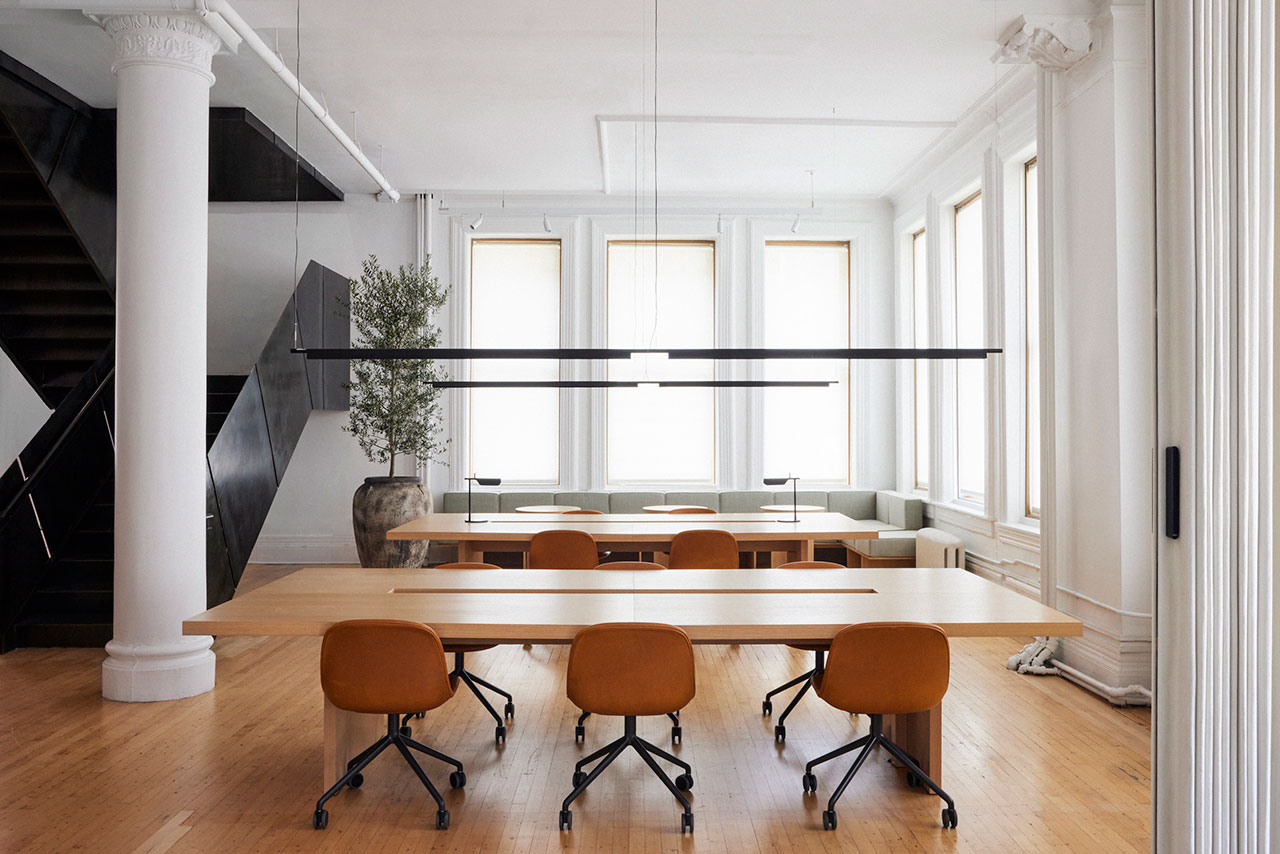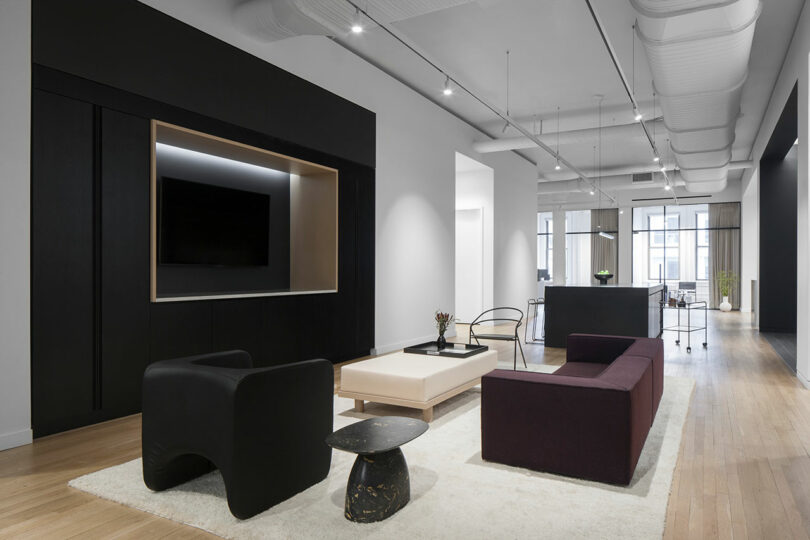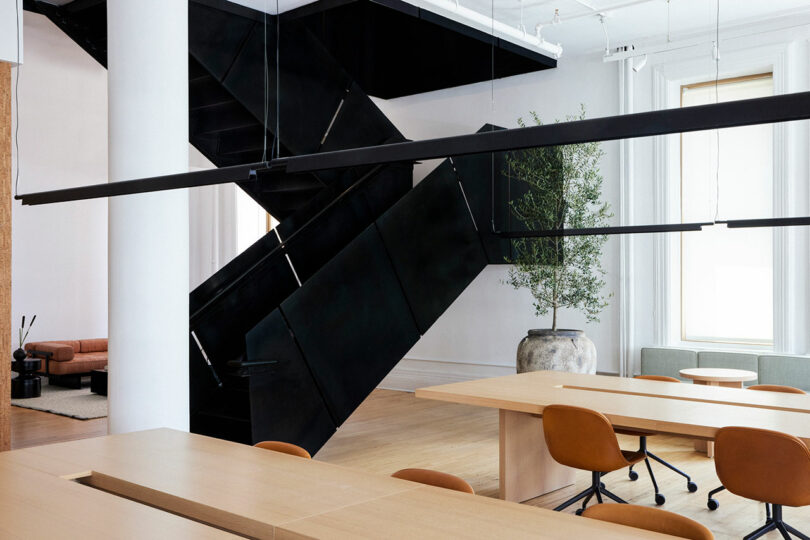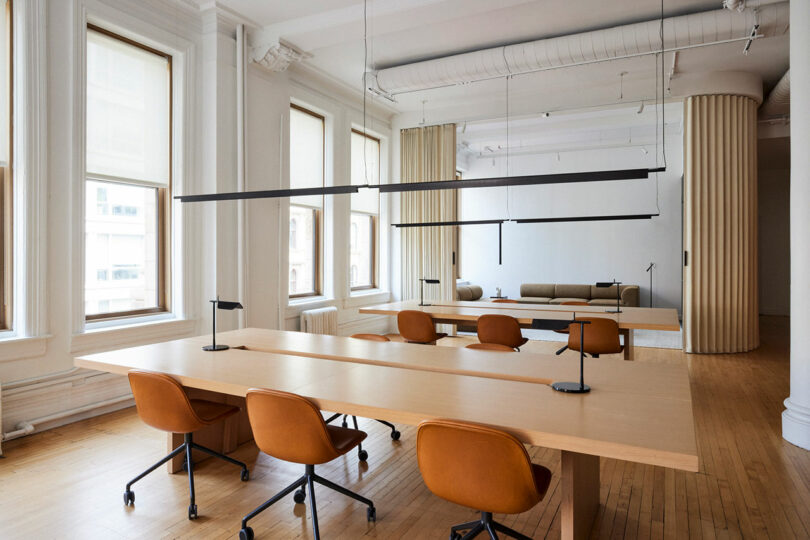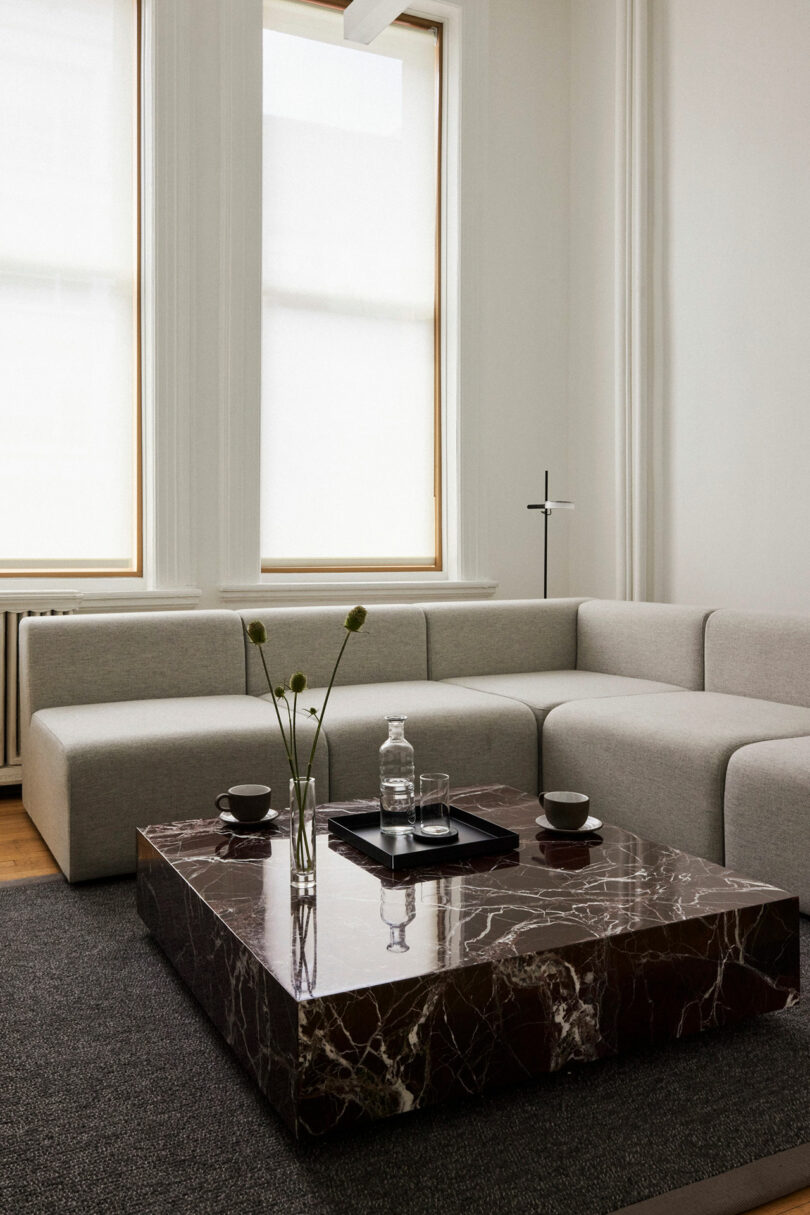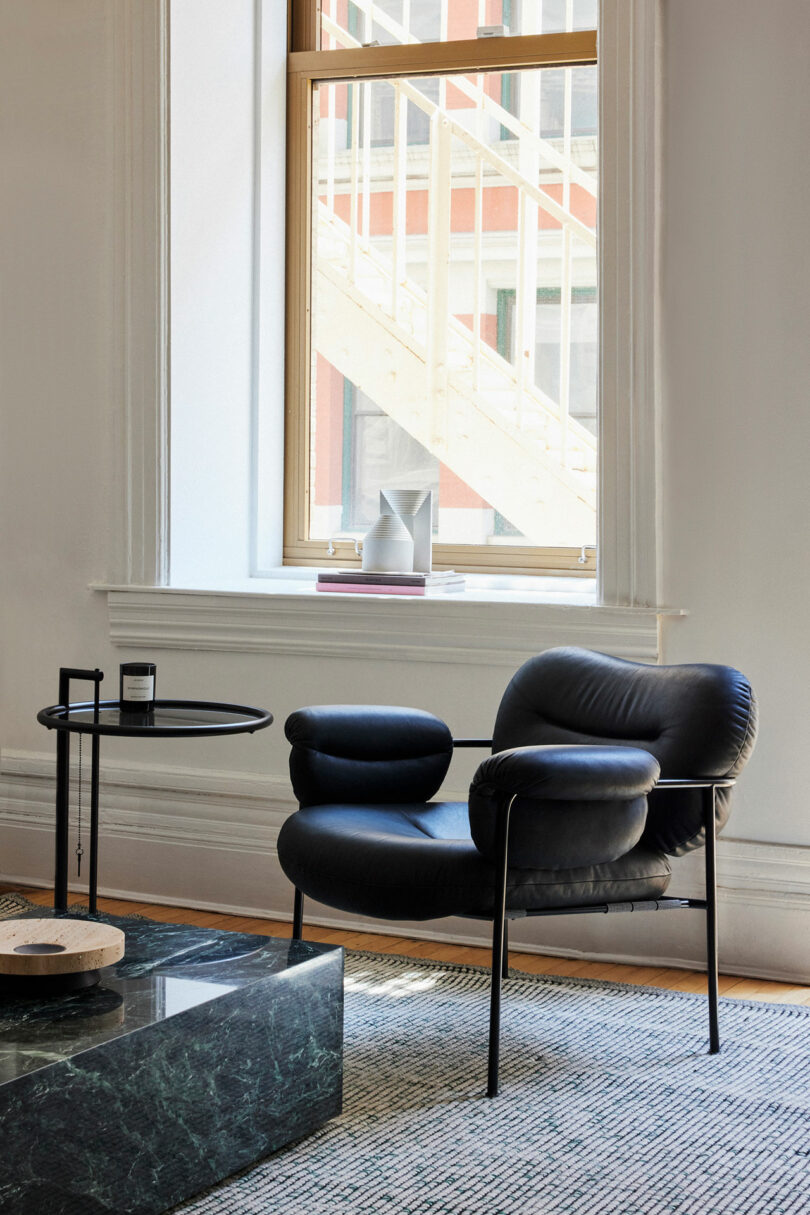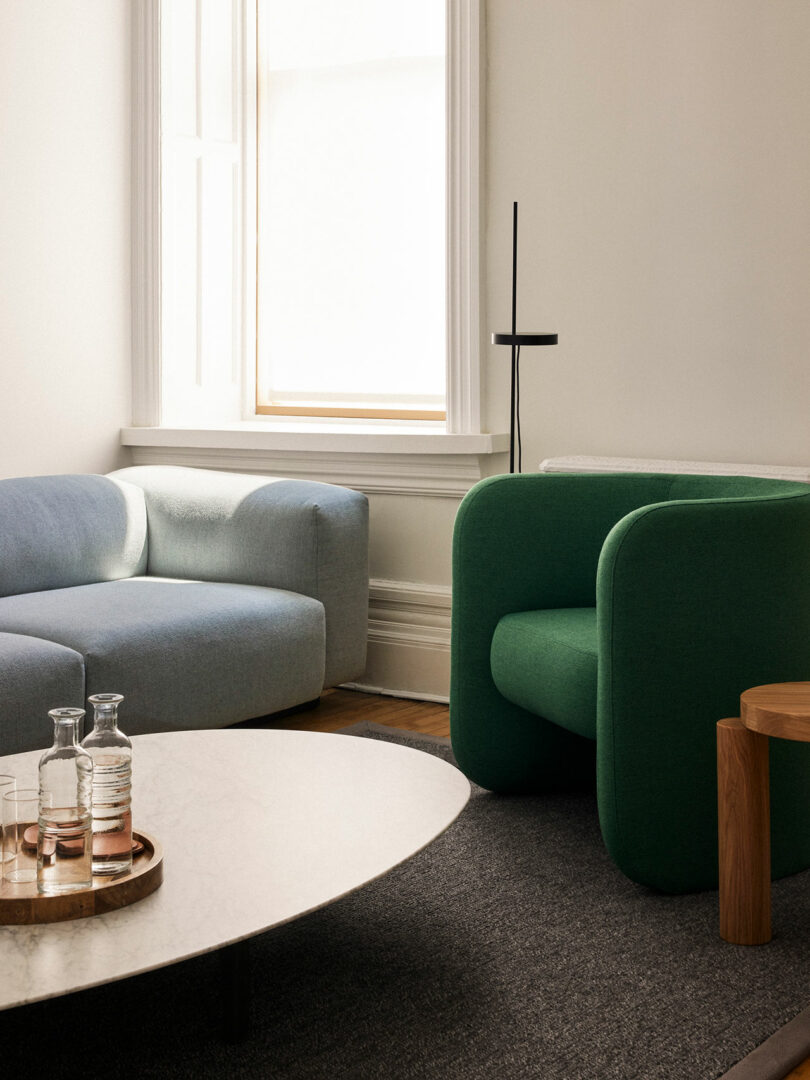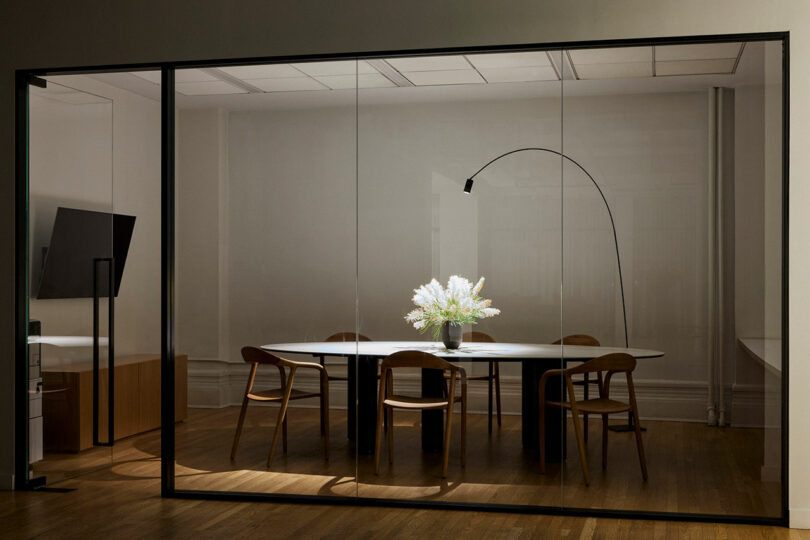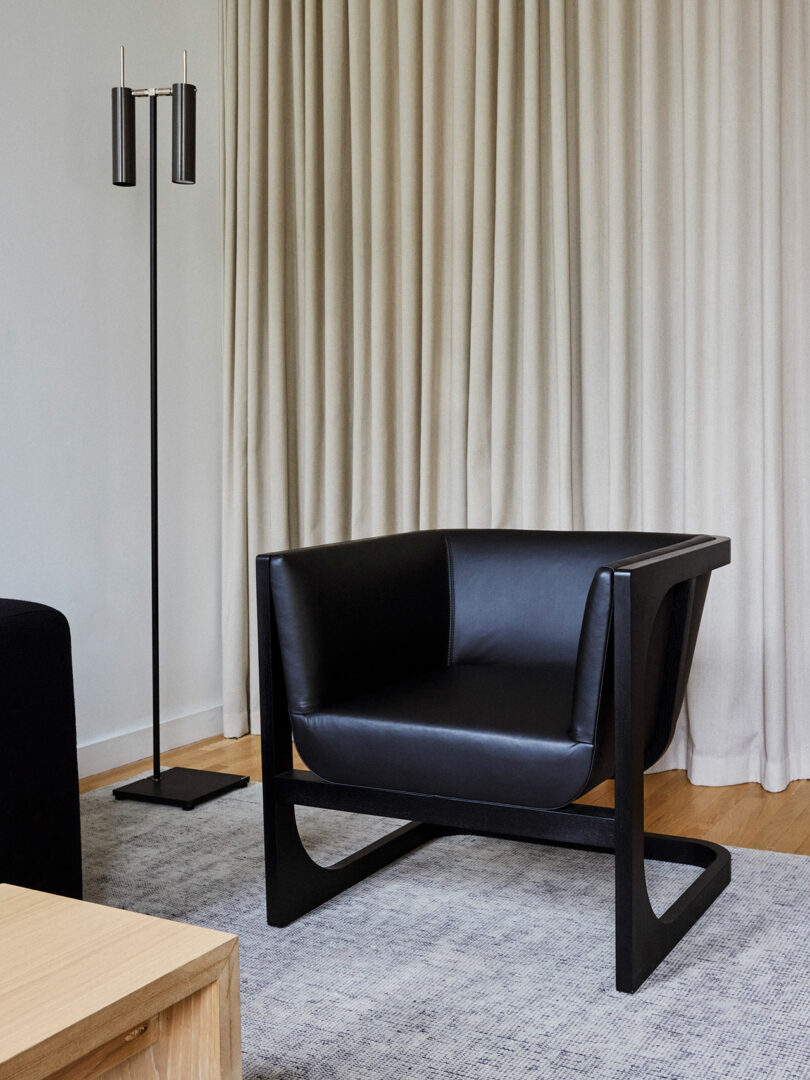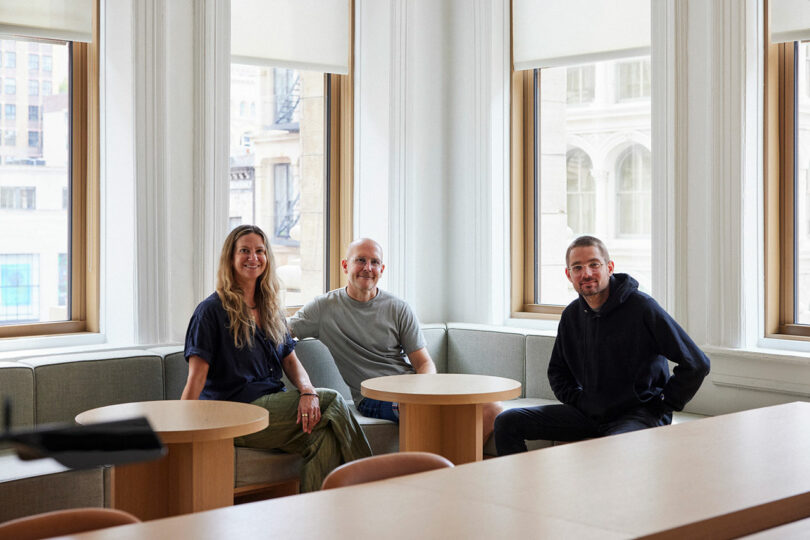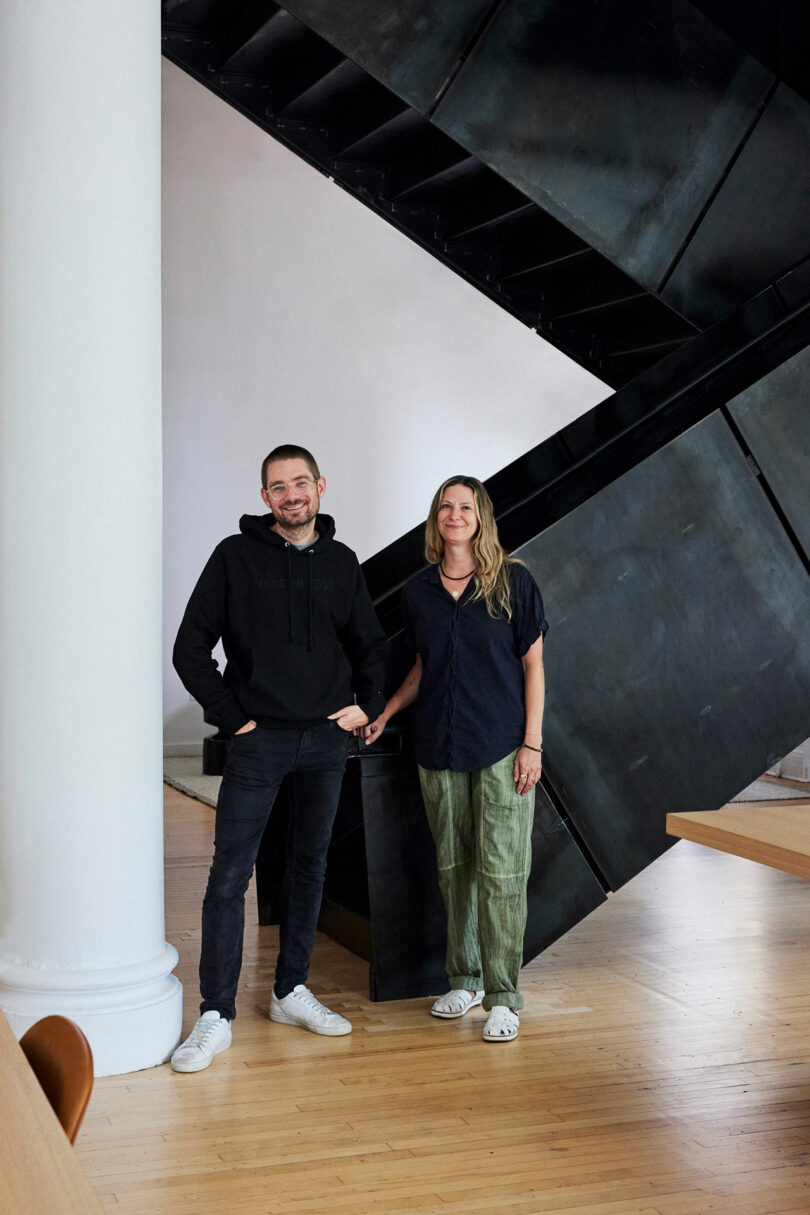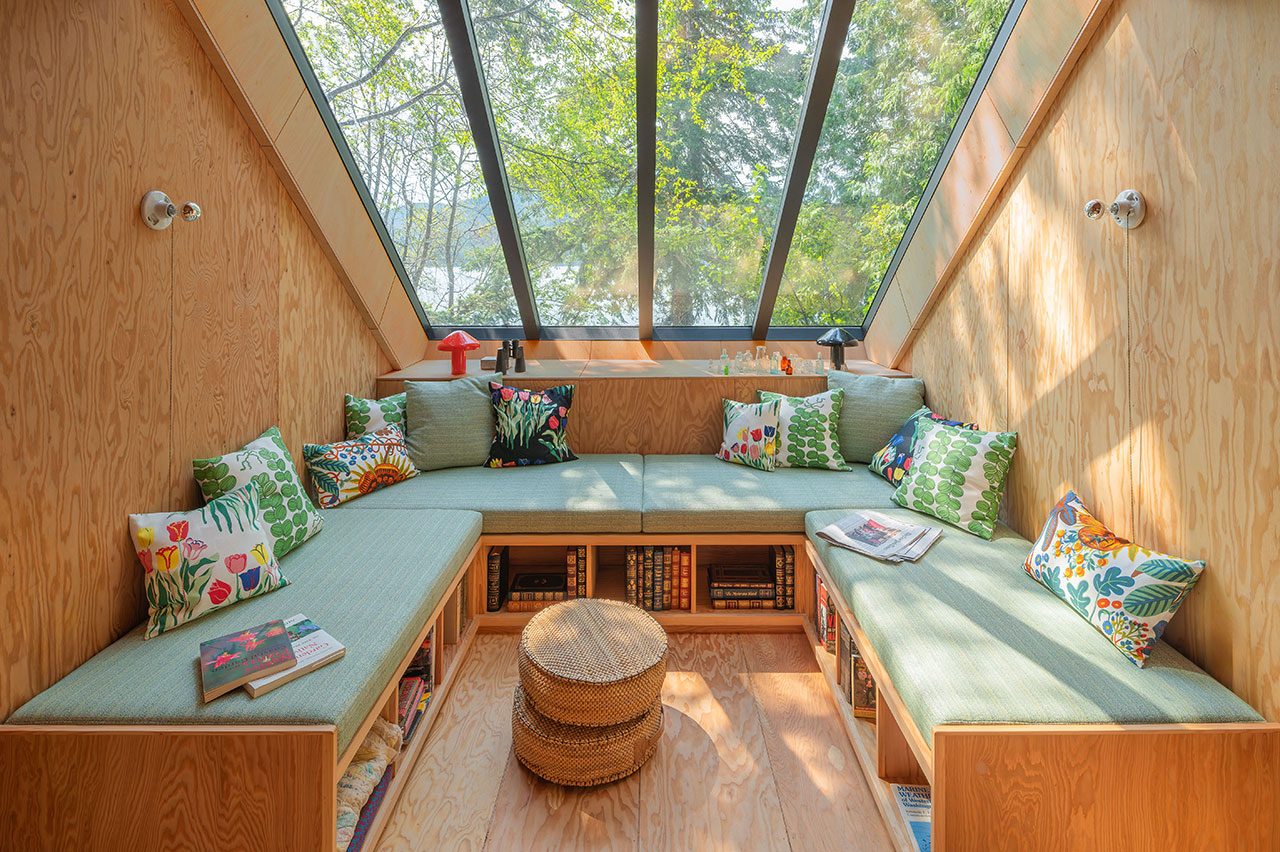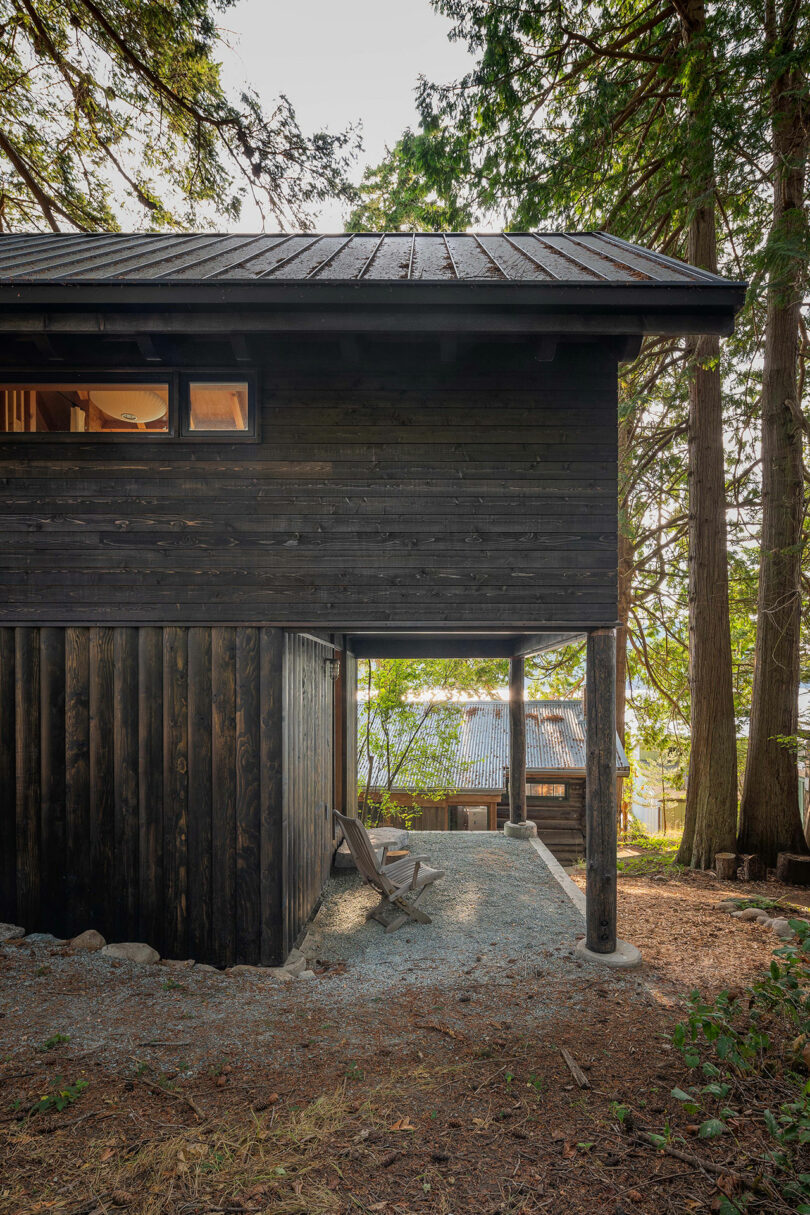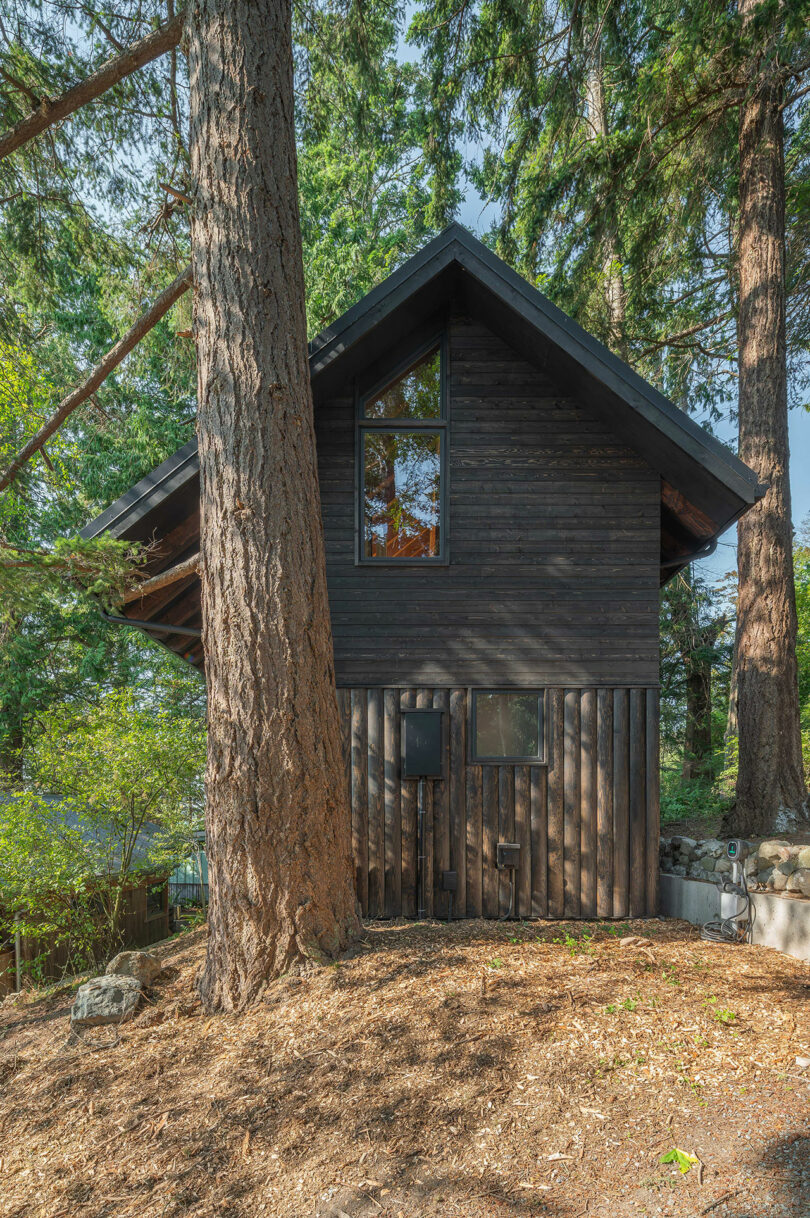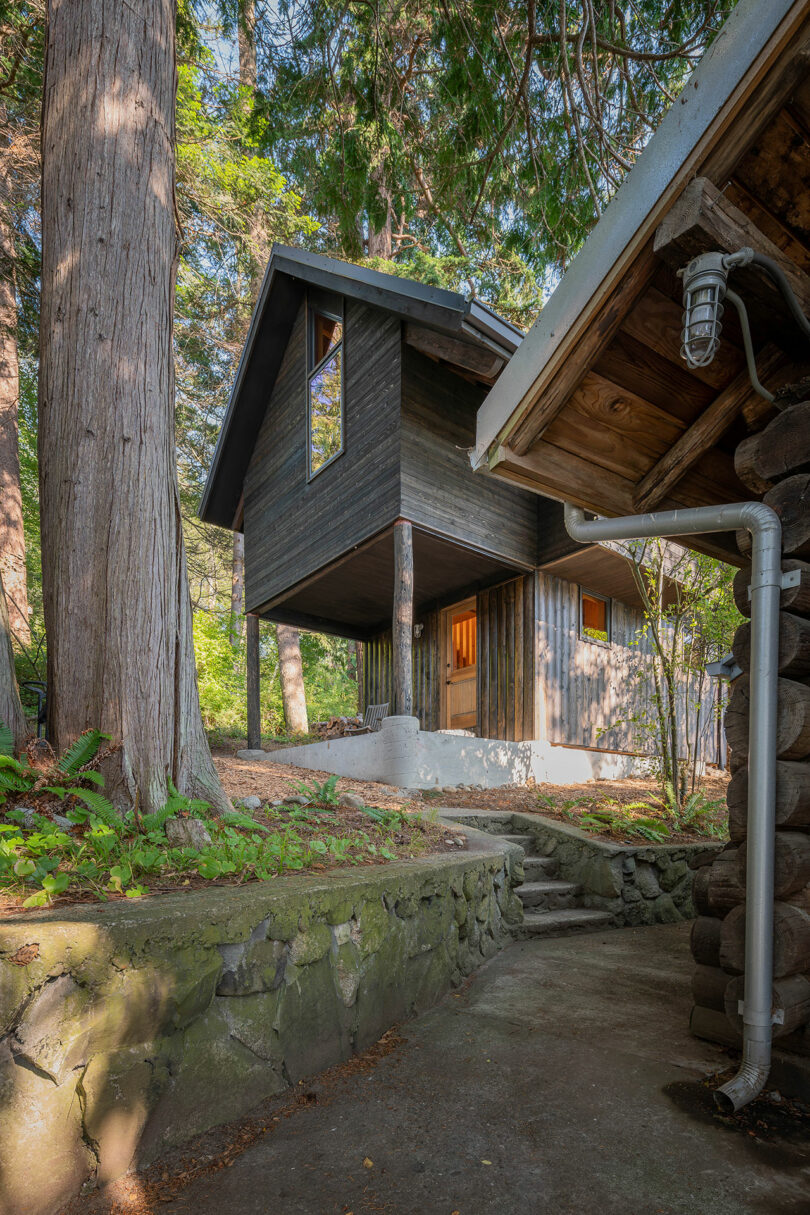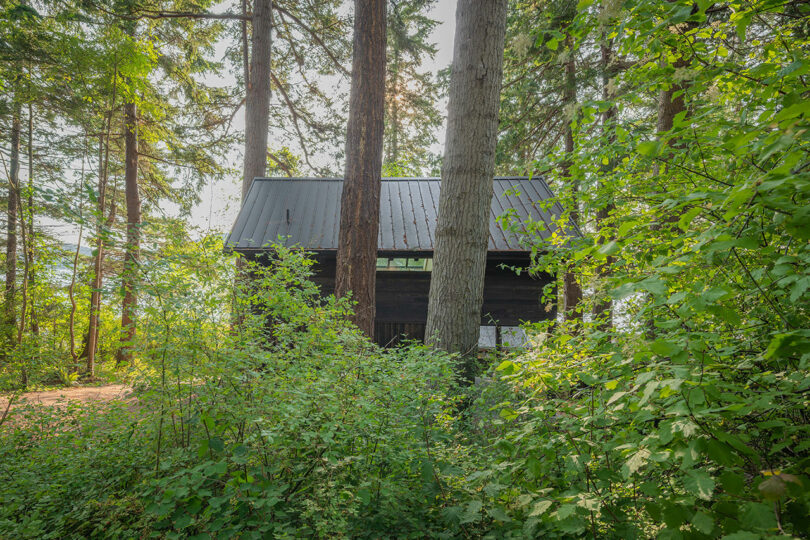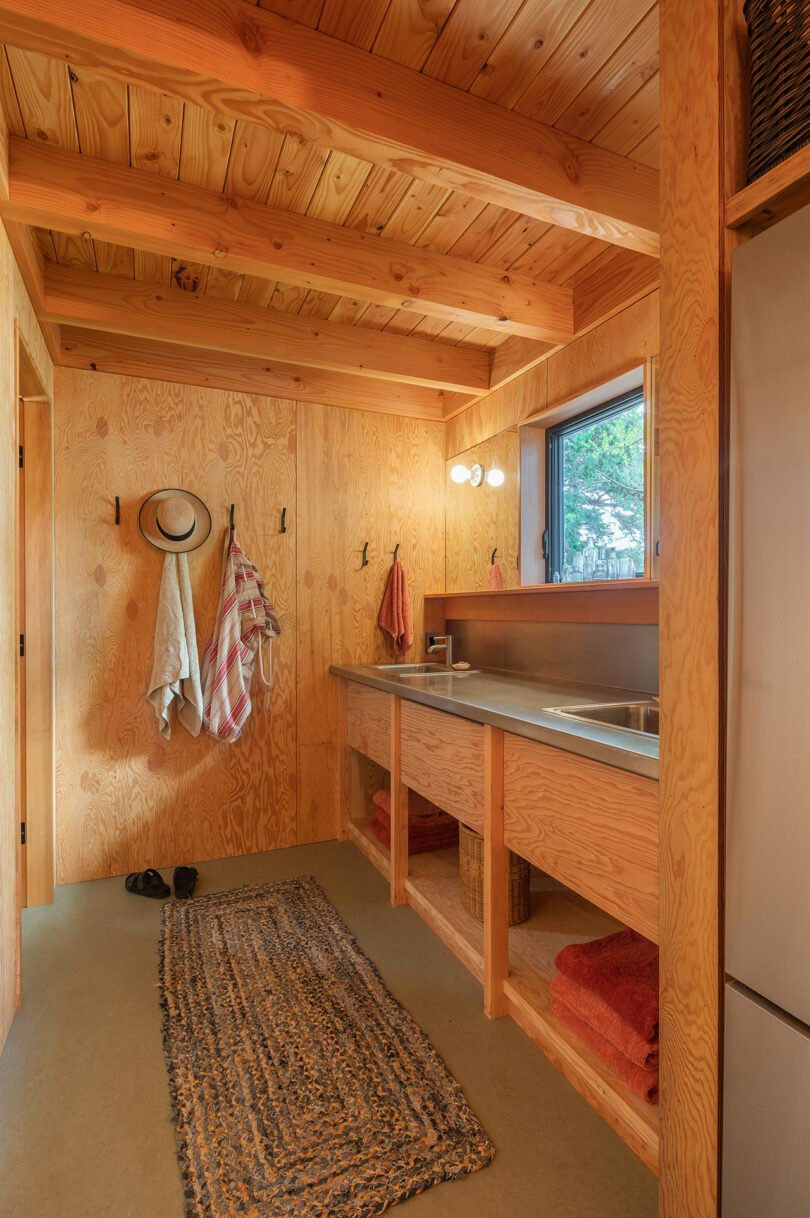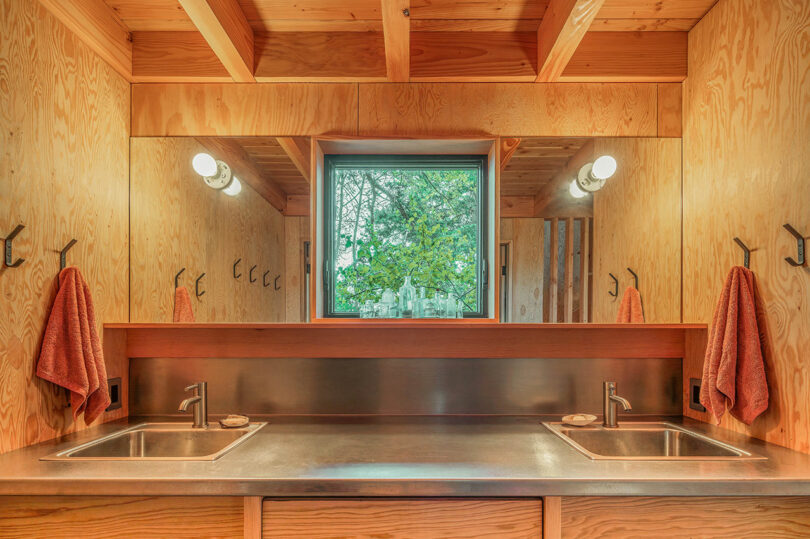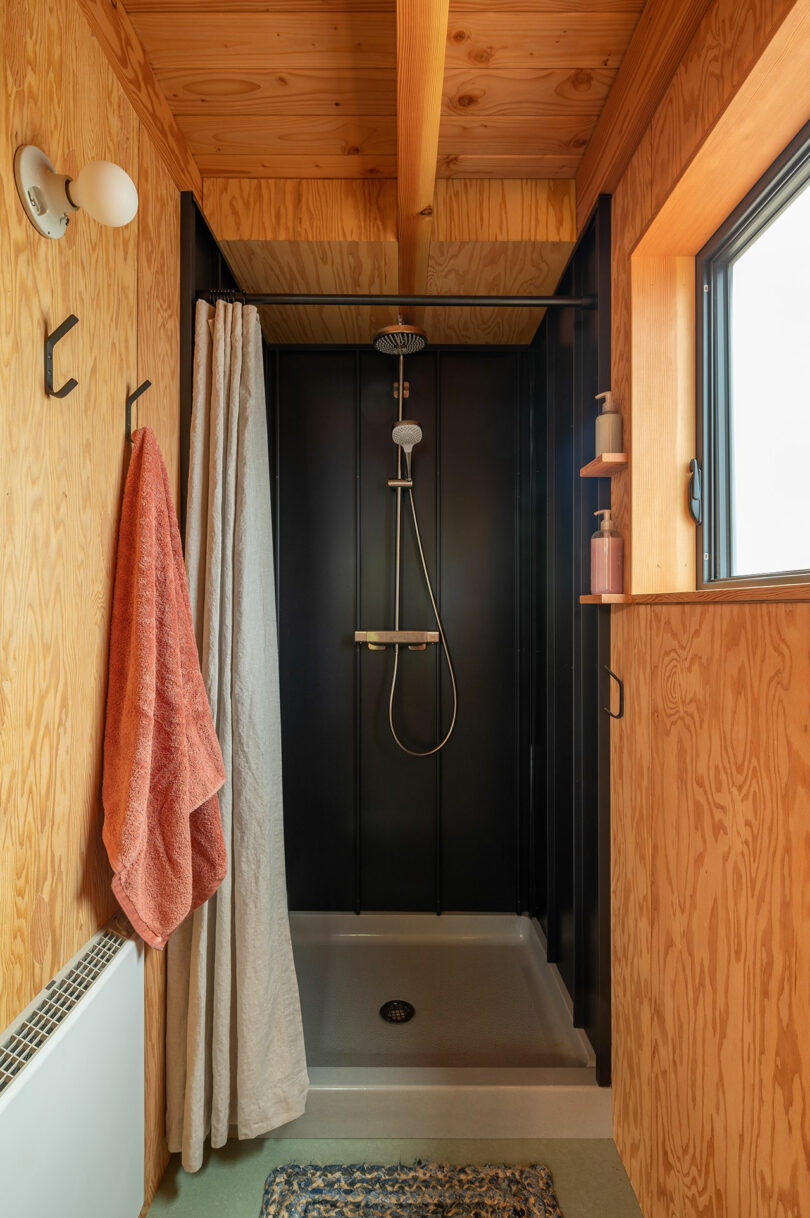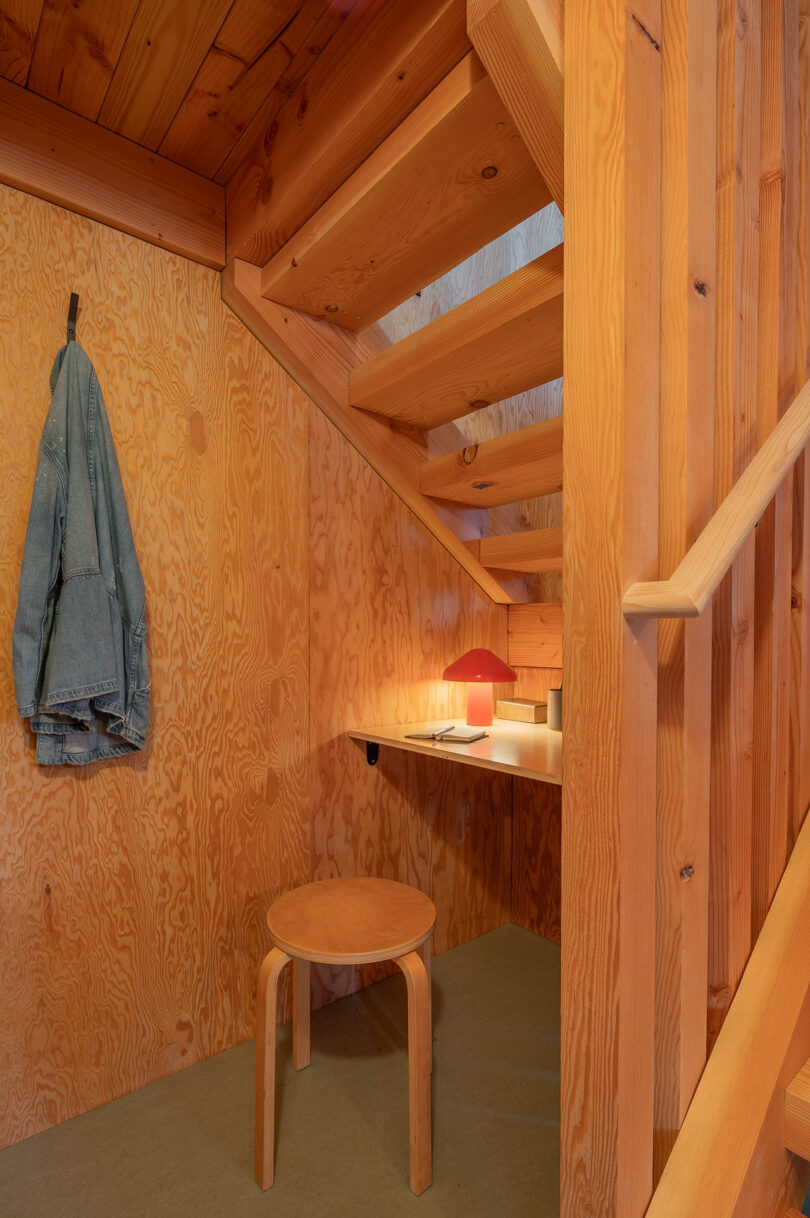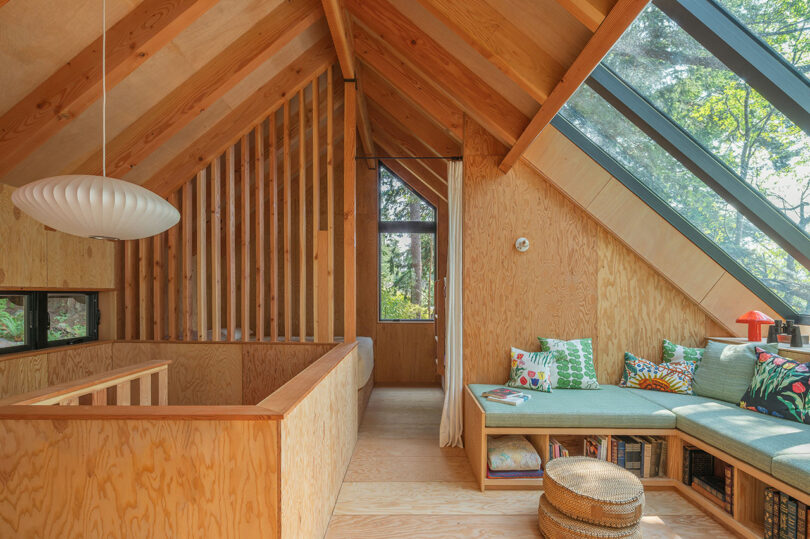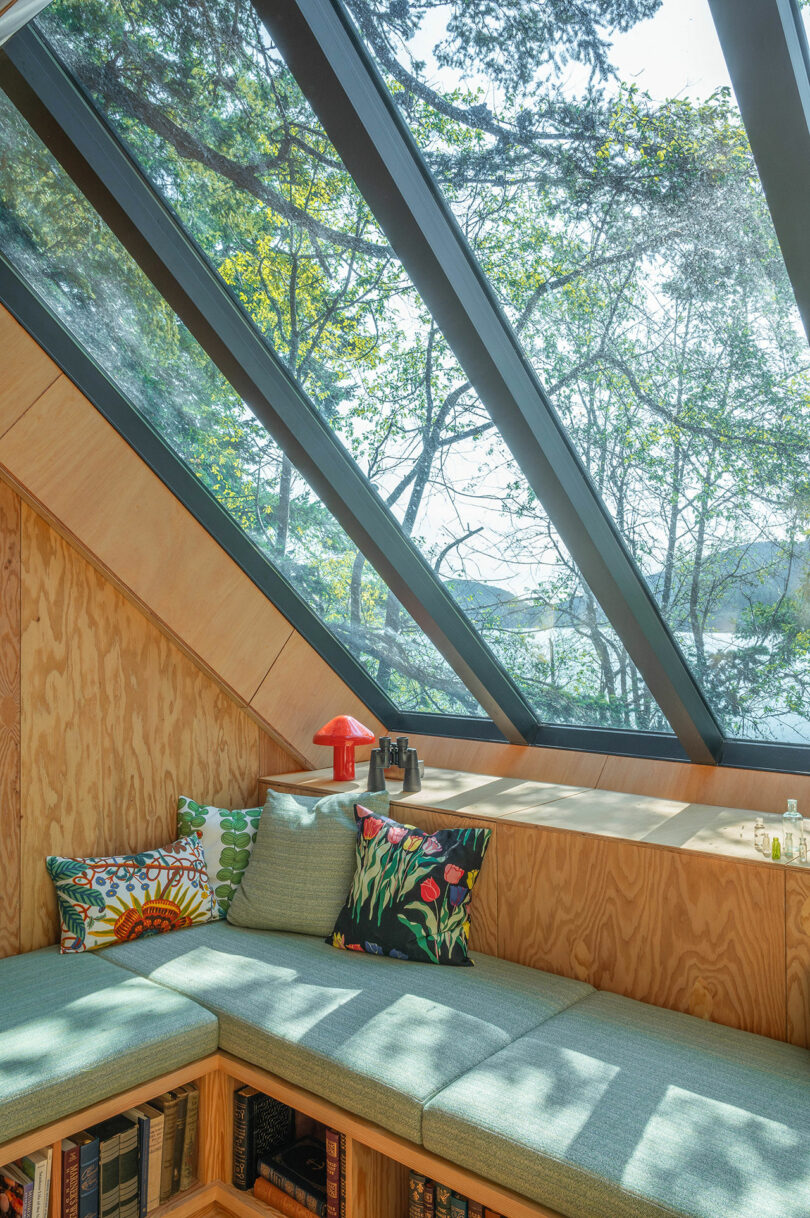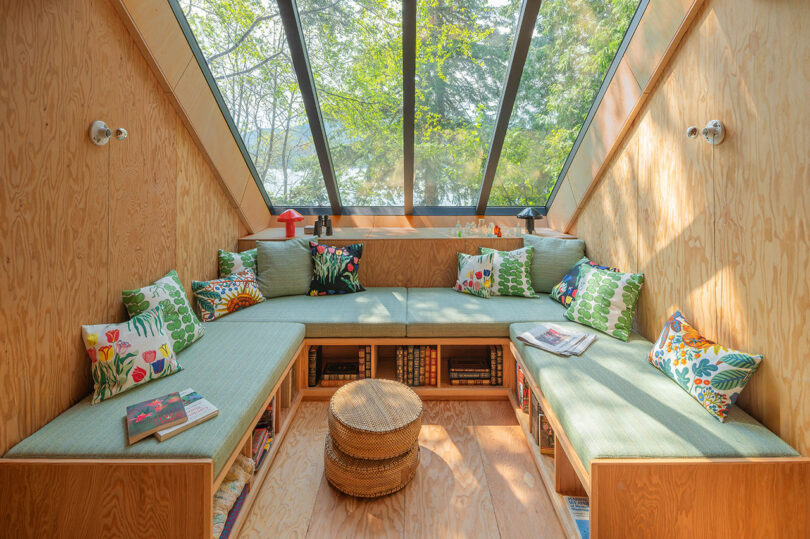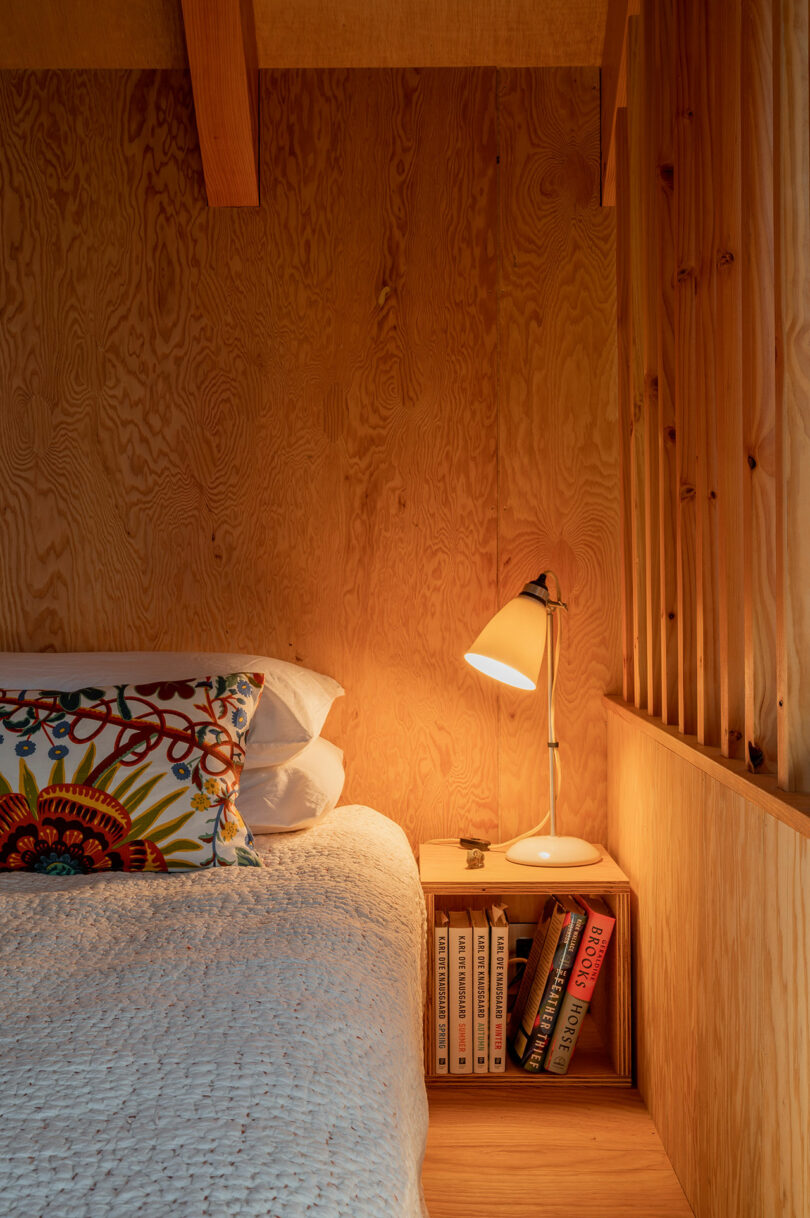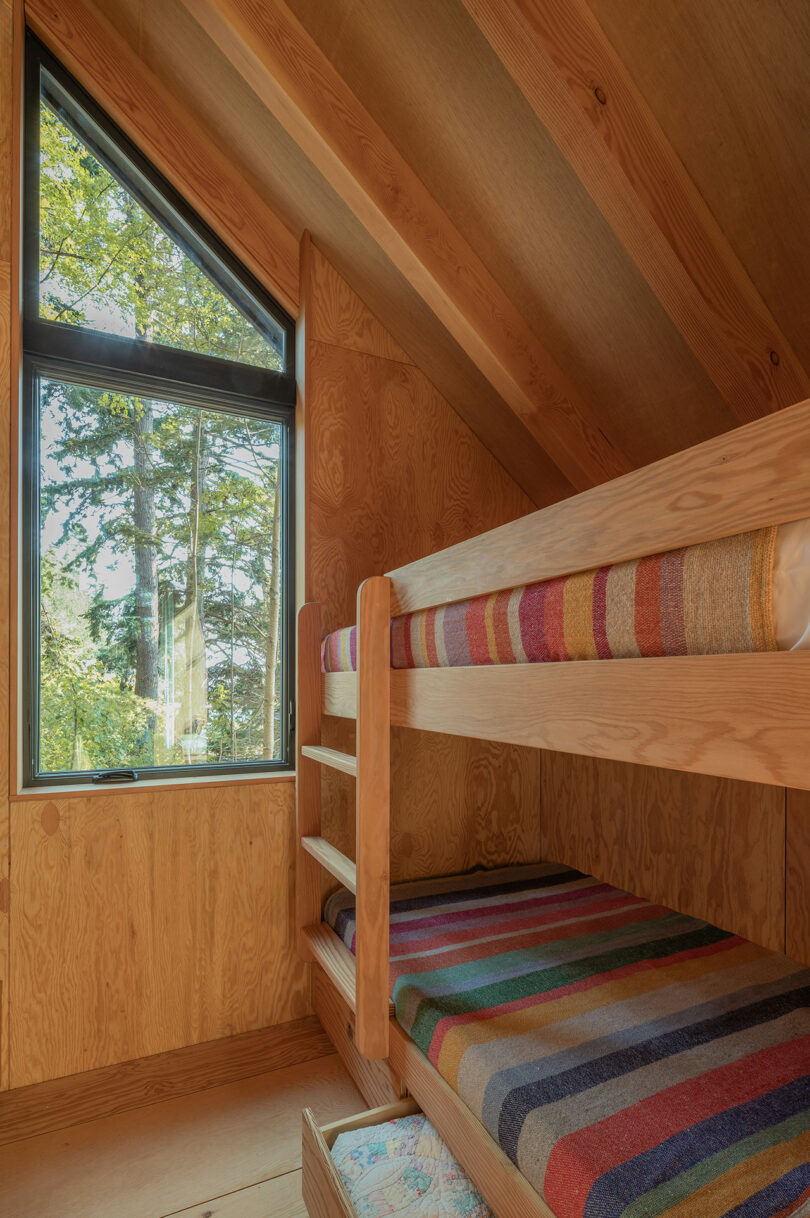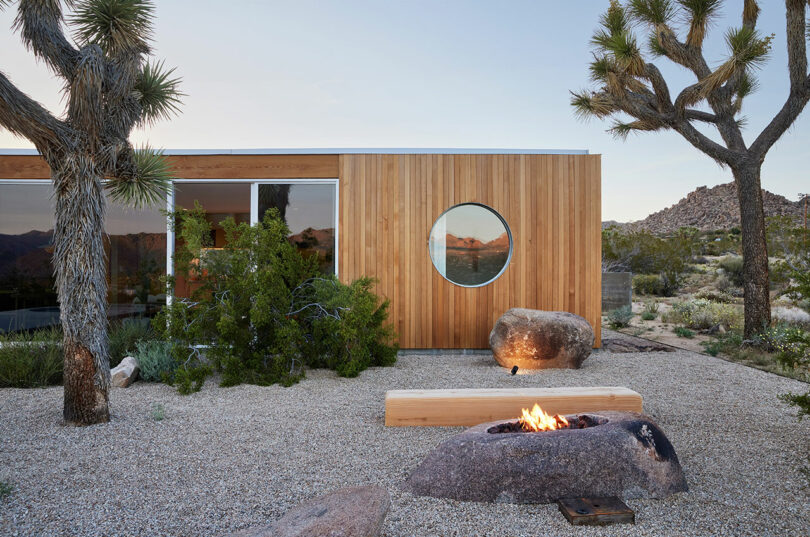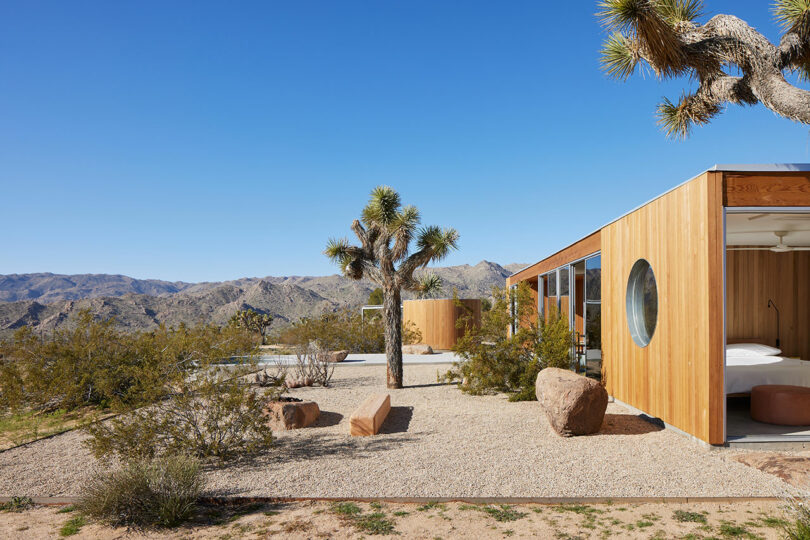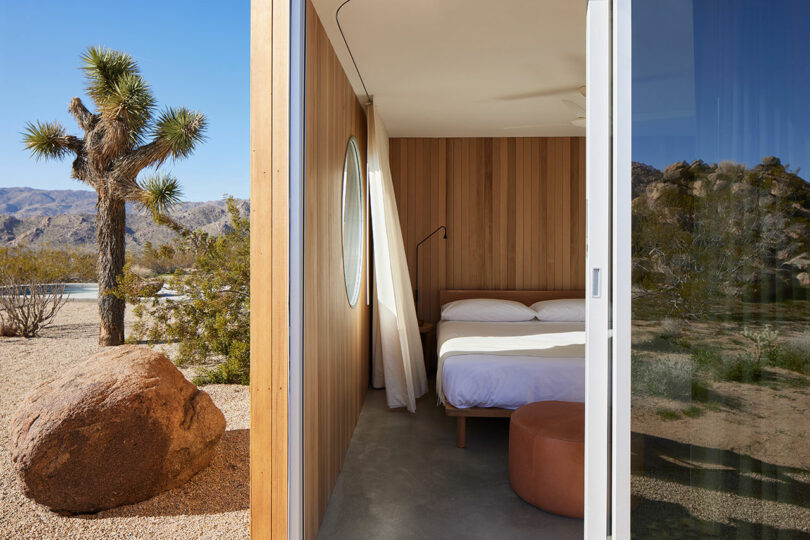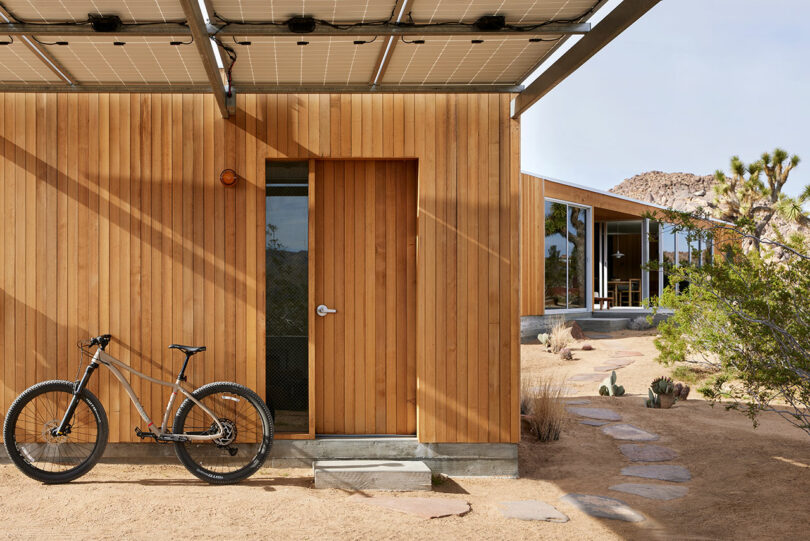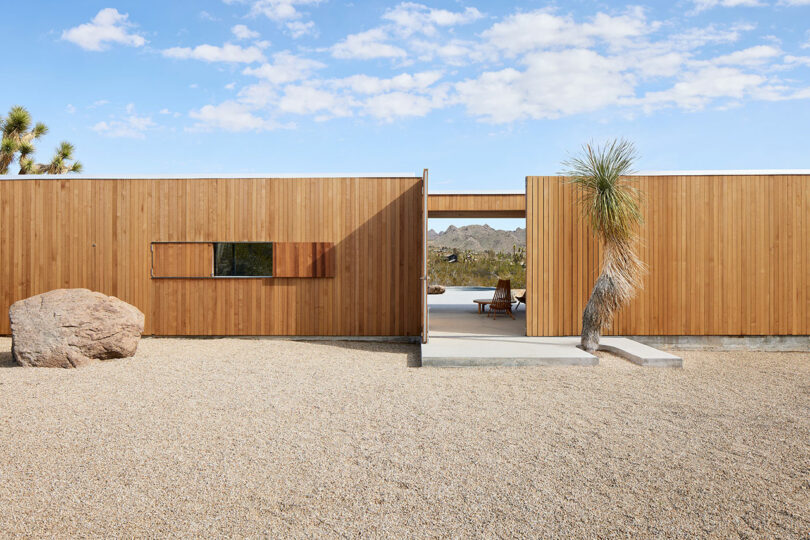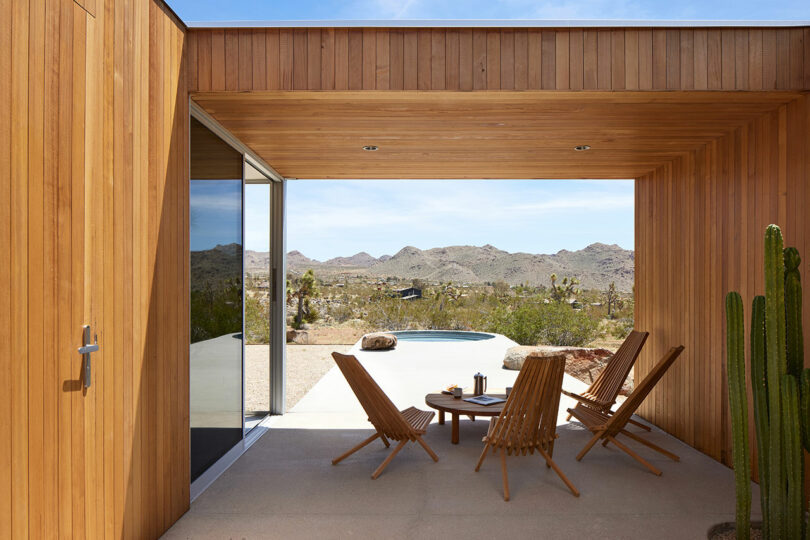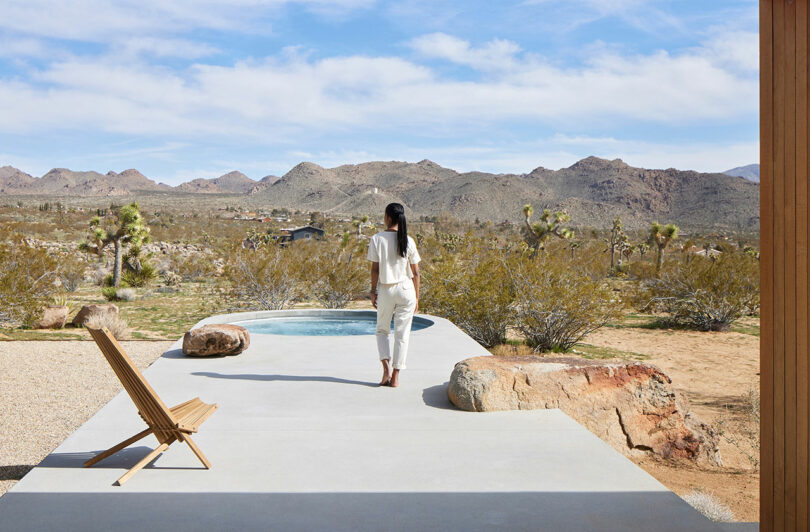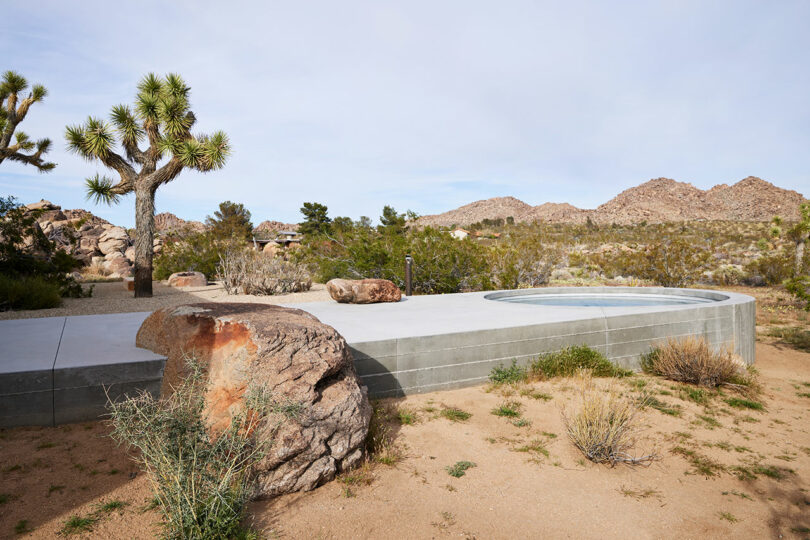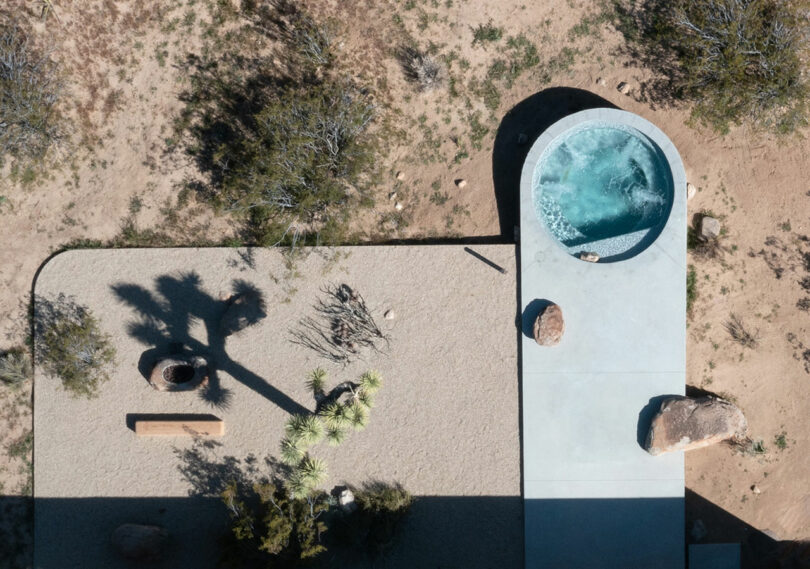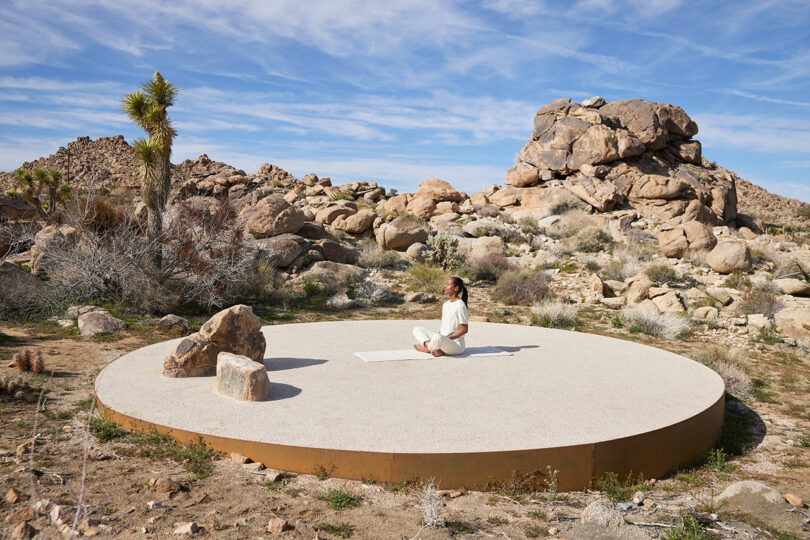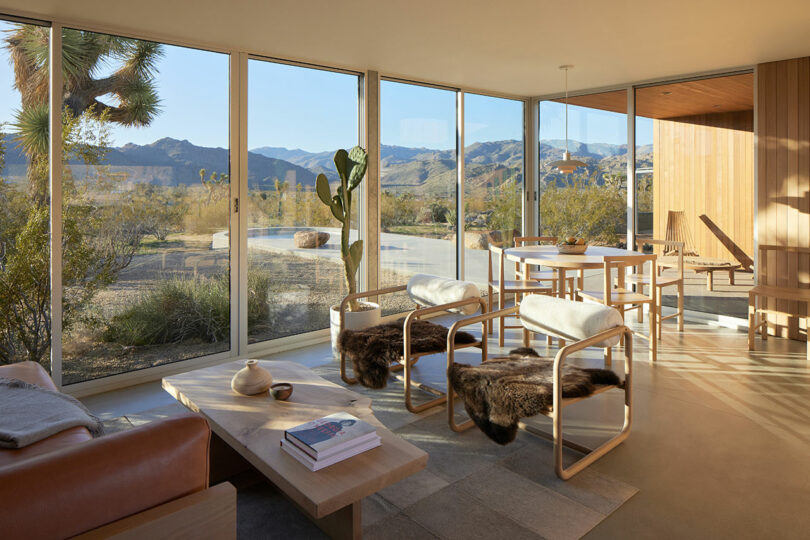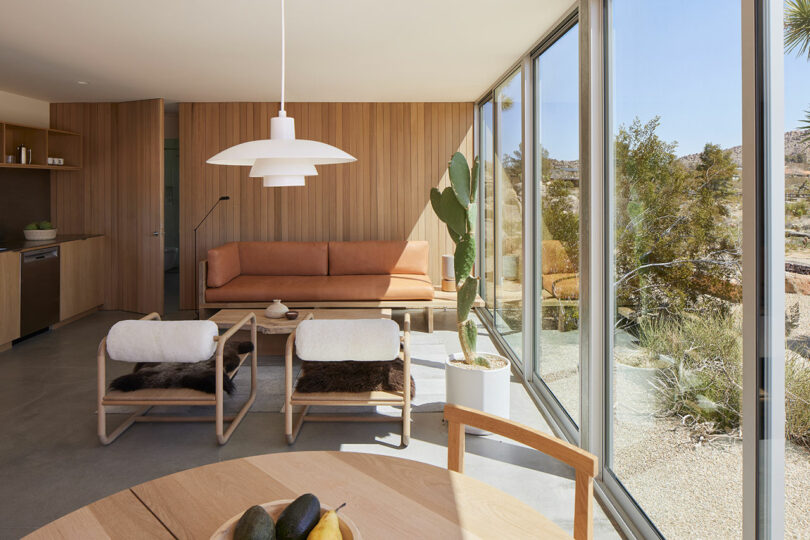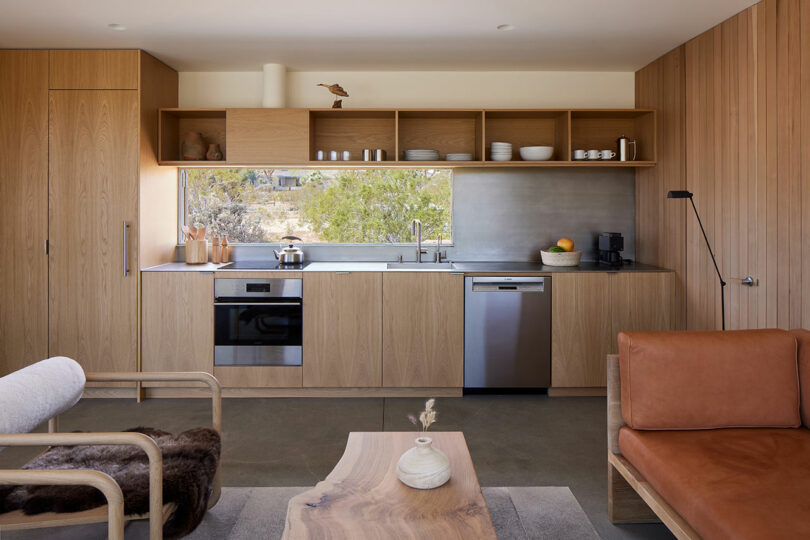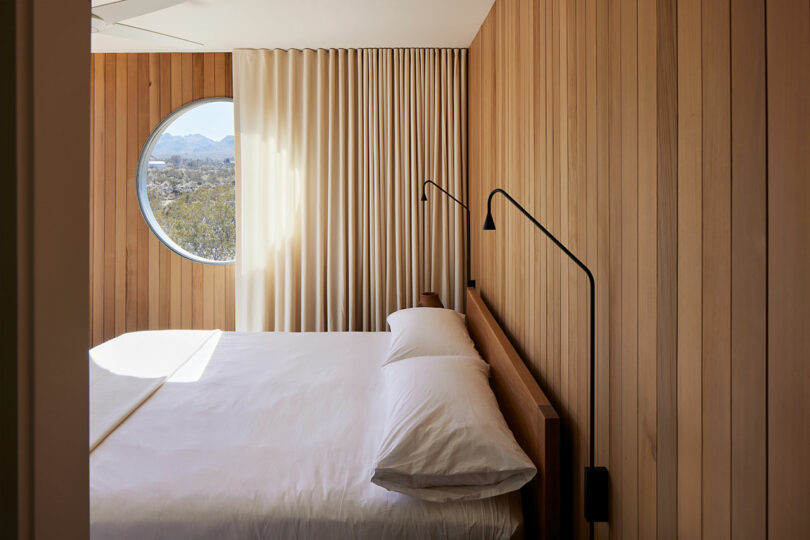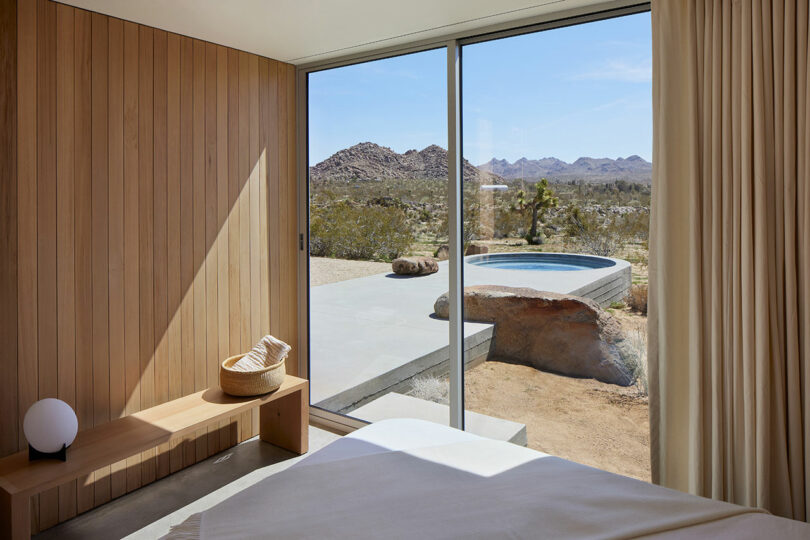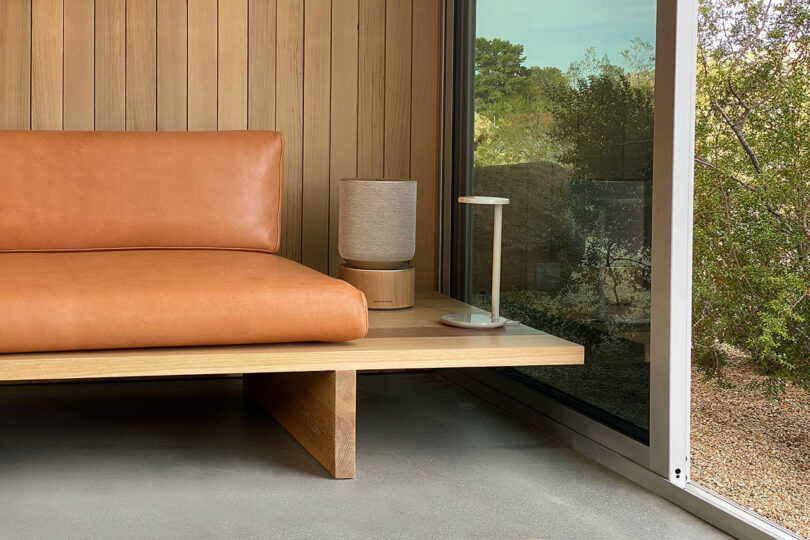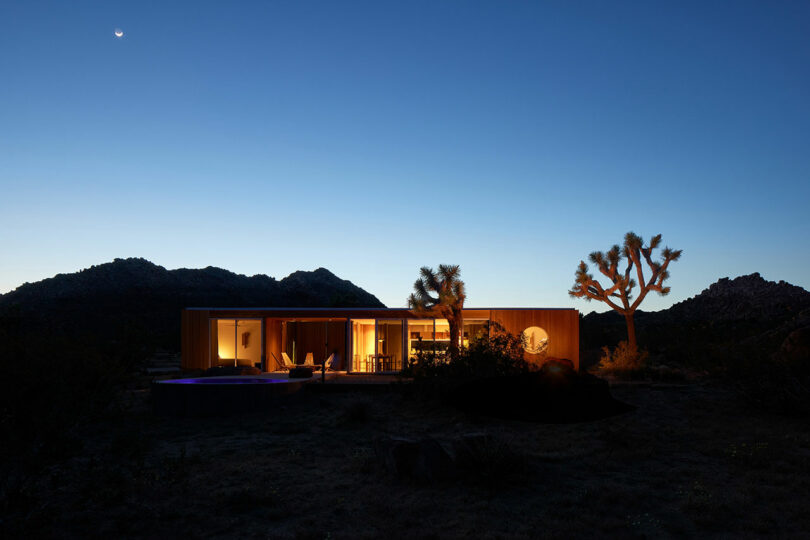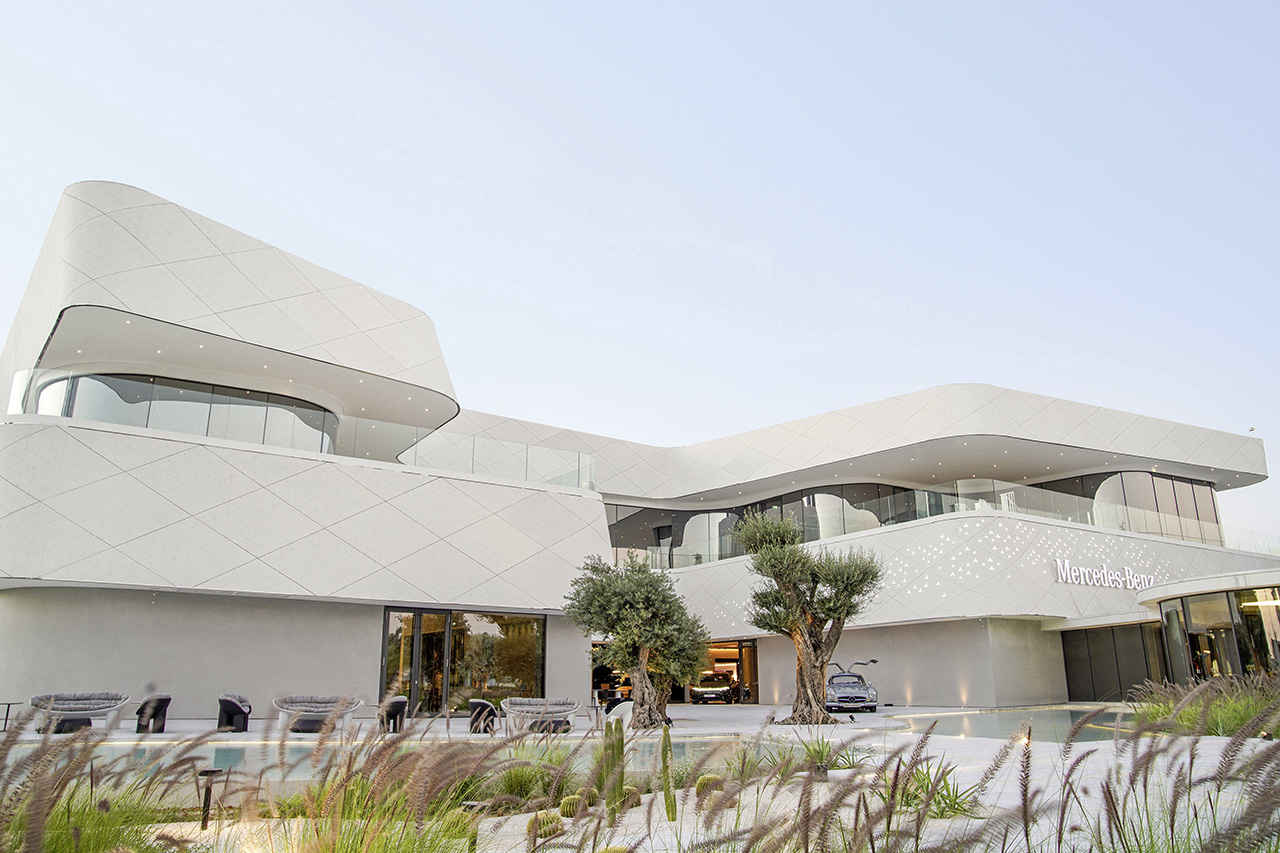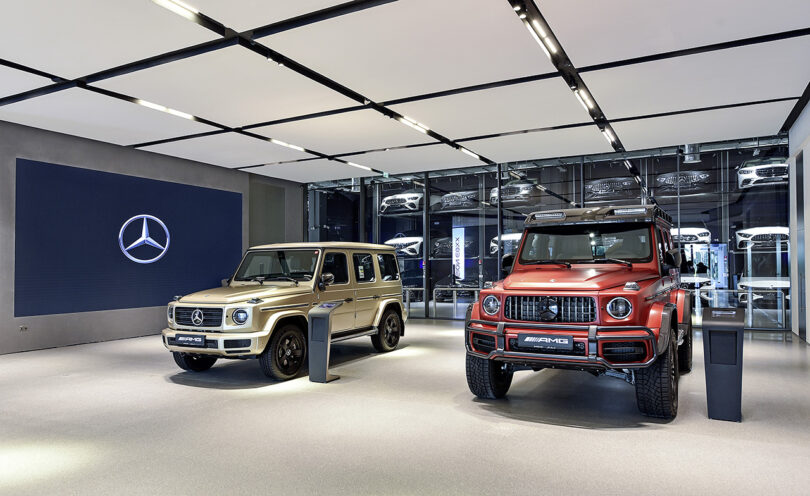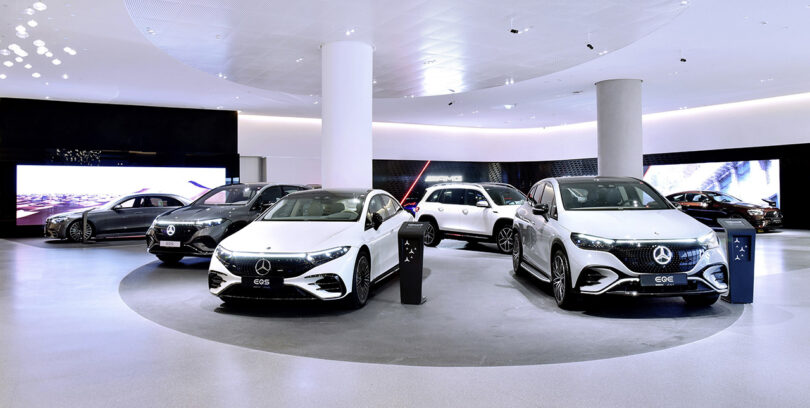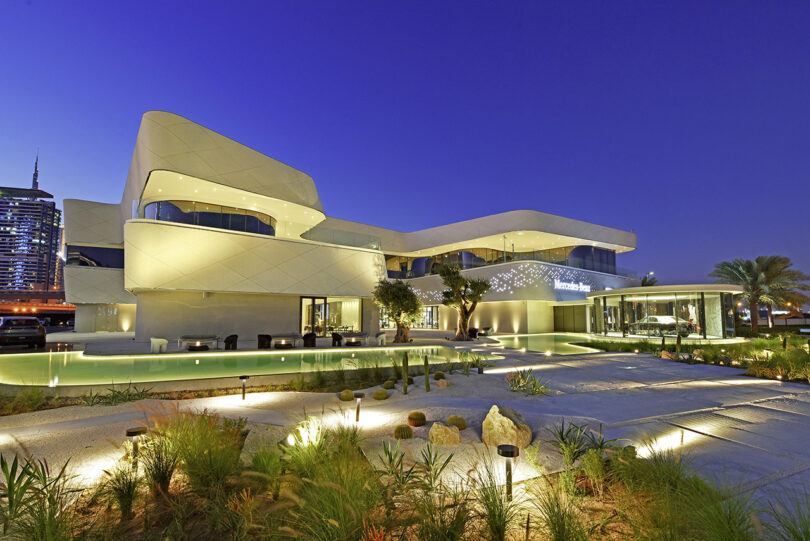Category: Architecture
Uli Wagner Fuses Aesthetic Genres In Modern Post SoHo Space
[ad_1]
Reeling from an exciting expansion, the bicoastal creative editing and post-production studio Modern Post celebrates their newly renovated SoHo headquarters designed by full-suite interior and product studio Uli Wagner Design Lab. Reprising their role in this narrative, the two creative forces first collaborated in 2017 when the lab reworked and furnished the studio’s then newly acquired location in downtown Manhattan. In this follow-up to their critically acclaimed renovation, the duo spent nearly two years strategically planning and executing the splicing of existing programming with new editing suites, assistant and producer flex spaces, and special technical rooms that accommodate further company growth.
Akin to watching films on the silver screen, movie magic is best made in-person. “Our team has been extremely motivated to work together in the studio again,” Modern Post Managing Partner/Executive Producer Charlyn Derrick says. ”It was important to us that we provided them with spaces that not only are comfortable, but allow them to move with ease between in-person collaboration with colleagues and clients to virtual meetings and calls.”
Having fashioned office spaces for brands like Calvin Klein, Proenza Schouler, Altuzarra, and Agnona, Uli Wagner Design Lab’s sensibility aligns with Modern Post’s ethos for a quality work life post-pandemic. Comfortable, pleasant, and perfectly lit workspaces are styled with versatility in mind to facilitate open dialogue between collaborators while offering respite from the din of corporate conversation or the privacy for professional correspondence one-on-one. These tenets are further articulated in amenities, which serve to set a welcoming tone. In addition, Modern Post keeps their fridges full and pantries stocked in a gesture to make their “house” feel like home.
Of the two within the building that they occupy, each floor plate roughly measures a generous 5,000 square feet. Guests are introduced to the grand space through the main reception on the upper floor where they are picked up by administrators or senior editors and brought to varying sized suites situated within an inviting, open plan that includes central large kitchen for communal gatherings. Comprising the lower floor is a secondary reception, offices, conference spaces, and a larger producer area with flexible adjacent lounge area, more editing suites, and technical visual effects and color rooms adjacent to a large assistant area with an independent kitchenette. Architecturally, Uli Wagner Design Lab manages to combine a series of interventions throughout multiple floors in Modern Post’s existing traditional cast iron, terracotta clad structure without compromising the theater of circulation.
“The new design also called for an intelligent, visually striking approach to connect the 3rd and 4th floors, with a blackened steel stairway that anchors the surrounding footprint,” says founder of his namesake studio, Uli Wagner. “In addition to being a strong visual moment, this is also a natural meeting location and point of high circulation. To that end, we subtly designed the rest of the space with this flow toward the staircase in mind.” Enclosed, private spaces are gradually introduced as one moves farther away from the staircase. This is further signaled in various solutions including unique wall formations, recessed doors, glass partitions, and curtains that lend themselves to the art of transition. One such investment includes a significant installation of the smart flexible folding door system by Italian firm Dooor.
Aspirational, residential and retail spaces are often referenced in layout, styling, and furnishing methods used to carefully choreograph circulation. Details often dismissed as decorative were especially important in realizing workplace experience as each room is a meticulously arranged vignette. “The furniture chosen has such sculptural yet stunningly minimal qualities, that we wanted to put it in scene,” adds Wagner. So the design team focused on crafting scenes around key focal points, which include solid wood tables custom-designed by the Design Lab, an Austrian chair from MARCHGUT, as well as collectible vintage pieces by Bellini, Aulenti, and others. This intentional curation imbues the project with a sense of humanity often lacking from office decor. “Contrary to what many would expect from a creative, cutting-edge company like Modern Post, the NYC headquarters is an expression of tranquility, with generous harmonious spaces featuring well-curated furniture layouts and soft tones.”
[ad_2]
Source link
TerraViva Competitions launches Cultural Winery competition – World Architecture Community
[ad_1]
TerraViva Competitions launches Cultural Winery competition World Architecture Community
[ad_2]
Source link
A Guemes Island Guest Cabin That’s Rustic Yet Modern
[ad_1]
Nestled on Guemes Island looking out to the Bellingham Channel in Washington State, the Guemes Island Bunkhouse is two-story retreat with a nod to the past. Designed by SHED Architecture & Design, the rustic yet modern bunkhouse is set to be a family heirloom for future generations to enjoy on family vacations.
The bunkhouse is built just ten feet away from the family’s 100-year-old log cabin, a relic originally located on Lopez Island and then taken apart and floated to its current location in the 1940s. Unlike nearby homes, the cabin is set back into the trees, providing a more private experience, while maintaining western views. The new bunkhouse follows suit, perched strategically to embrace nature while minimizing the footprint.
For water, they first had to decommission the property’s dry well before installing a rainwater catchment and potable water system. Further uphill, a new septic system is placed away from the floodplain, ensuring the bunkhouse won’t be affected by rising sea levels.
Drawing inspiration from its rustic cabin roots, the exterior is clad with two kinds of black-stained siding – Disdero Cabin Log Siding on the bottom and 1×6 Tongue and Groove Rough Sawn Western Red Cedar Ship Cladding on the top floor. Curved details on the rafter tails and bunk bed ladders pay homage to the log siding, creating a design that feels both nostalgic and fresh.
The architects at SHED Architecture & Design relied on low-maintenance materials, like stainless steel, plywood, and sheet marmoleum flooring.
Visitors arrive via a front porch that opens up to a compact ground floor with a kitchenette, built-in desk, and bathroom that accommodates multiple people. Open wood stairs lead occupants to the second story.
On the top floor, a U-shaped, built-in seating area lives under a slanted wall of windows that frame the surrounding trees and Bellingham Channel below. On either end of the open gathering space there are sleeping areas to for the overflow of people visiting.
In addition to the two sleeping quarters, each of which includes a bed and set of bunkbeds, the seating nook doubles as extra places for visitors to sleep when needed.
Contractor: Kaplan Homes
Structural Engineer: Todd Perbix
Interior Designer: Jennie Gruss
Photographer: Dain Susman
[ad_2]
Source link
Modern Wood Pavilion Integrated Into California’s Joshua Tree
[ad_1]
Industry of All Nations (IOAN) has unveiled The Landing House, a modern wood pavilion seamlessly integrated into the rugged Mojave Desert landscape, near California’s Joshua Tree National Park. In the vast expanse of the desert, where the landscape is both harsh and delicate, the home is an example of eco-sensitive design that not only respects but enhances the surrounding environment.
The Landing House begins with the Gerscovich brothers – Fernando, Juan Diego, and Patricio – whose passion for sustainable design led them to the awe-inspiring Mojave Desert in 2019. Struck by the beauty of the landscape and its natural light patterns, they envisioned a retreat blending into the untouched desert surroundings. After acquiring five-acres of land filled with iconic Joshua trees, natural boulders, and countless views, the brothers embarked on a mission to create a sustainable haven that respects the delicate ecosystem.
Fernando Gerscovich, a Buenos Aires-born architect, emphasizes the importance of minimizing disruptions to the natural landscape. “The landscape is harsh, and it can take decades for a plant or tree to recover if displaced from its delicate ecosystem,” he says. The design philosophy revolves around integration, ensuring that The Landing House becomes a comfortable retreat without imposing on the delicate balance of the desert ecosystem.
The low-profile structure, the use of simple materials like concrete, cedar, and glass, and a commitment to natural aging contribute to the unobtrusive yet captivating presence of the pavilion.
Designed for privacy and tranquility, the home is reached via a 400-year private road that winds through the desert terrain to a 9-foot-high horizontal wall protecting the house. A Yucca tree marks the entrance, welcoming guests to the vacation rental, where they’ll discover endless, 360-degree views.
The central breezeway divides the pavilion into two volumes on either side. “The division of the volumes was conceived as a way to sort of remind people of the natural beauty of their surroundings,” says Gerscovich. “It’s a subtle way of encouraging people to step outside, into nature, in the course of their movements through the house.”
The covered breezeway leads to a concrete platform with a plunge pool designed for relaxation. A second structure houses a solar-paneled carport, providing shade and renewable energy. A hand-carved fire pit in a natural boulder and a circular platform for yoga add additional spots to enjoy the natural surroundings.
Two bedroom suites are located on each end of the pavilion with the breezeway connecting the two wings. One side includes the open living room, kitchen, dining space, and separate workspace. The opposite wing houses the second bedroom, named the Pool Suite, with its own private access.
The interior is designed with cedar wall paneling, polished concrete floors, and white oak furniture resulting in a modern yet cozy space. Sliding glass doors open the living space up to the outdoors while offering views to the courtyard and pool.
If you’re looking to escape to the desert to stay at The Landing House, it’s available for rent via Airbnb here.
Photography by Ye Rin Mok, courtesy of v2com.
[ad_2]
Source link
Oasis of Automotive Luxury: Mercedes-Benz Brand Center Dubai
[ad_1]
In a city where gilded goods and luxurious experiences are as common as sunshine in the desert, even the epitome of luxury automotive brands Mercedes-Benz acknowledges Dubai requires an entirely elevated approach to attract one of the world’s wealthiest car-loving clientele through their doors. Located adjacent to Dubai’s Design District, the newly unveiled Mercedes-Benz Brand Center Dubai opens symbolic of a new wave of luxury retail within the city, incorporating modern architecture, sustainable landscaping, bespoke technologies, unique programming, and numerous layers of hospitality into an orchestration of the senses.
Details such as a shaded courtyard, reflective water feature, endemic landscaping, and the building’s desert-inspired hues in sum whisper, rather than scream, “luxury awaits within.”
Guided by Mercedes-Benz Brand Design and shaped by the automotive brand’s “Sensual Purity” design philosophy, the Mercedes-Benz Brand Center Dubai was realized by architectural firm Binchy and Binchy for UAE-based authorized Mercedes-Benz distributor Gargash Group. The center certainly assumes the role of an oasis of progressively respectful architecture stationed within a city increasingly defined by its nebulously contemporary skyline projecting upward, instead confidently content to stretch gently outward, respectfully private of its contents.
The center’s front facing facade, characterized by two layers of sensuously undulating parabolic ribbons, presents what may seem like a uniform husk from afar. Closer up, the curving planes reveal themselves to be a complex interconnected architectural surface of metal cladding of varying angles – a modern armor of perforated panels backlit with an LED lighting system bespoke to the building, adding a glimmer network of 3-point stars across sections of the building’s surfaces at night and much welcome shade during the daytime.
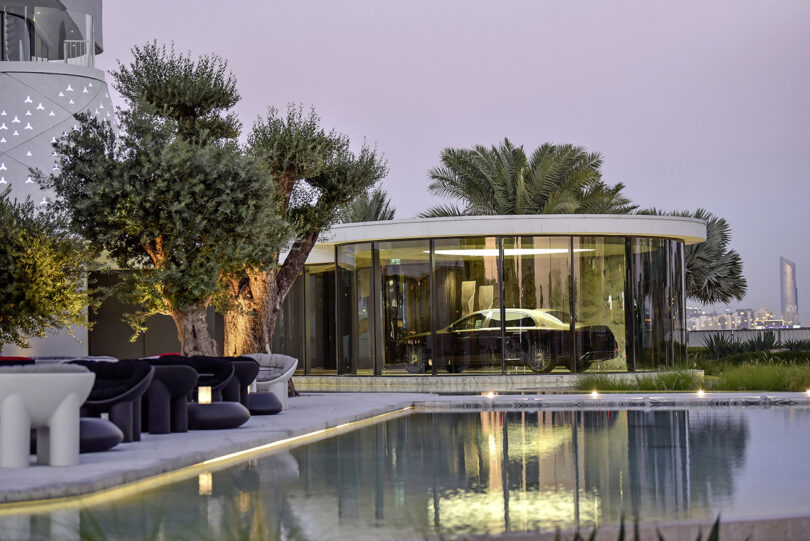
The most exclusive section of the Mercedes-Benz Brand Center is the “The Maybach Lounge,” a posh pavilion of curved glass windows showcasing Maybach models parked upon a 360-degree revolving platform.
According to Binchy and Binchy’s Design Director Jennie Binchy, the firm made great efforts to source materials and contract the expertise of local UAE manufacturers, noting the firm’s intent was to be respectful and acknowledging of the region’s architectural language. Alongside the scale and orientation of the Mercedes-Benz Brand Center, the exterior is one of surprising and welcome subtlety, an effect credited to the firm’s admiration and studied practice of incorporating traditional solutions through the prism of technological tools and construction methods.
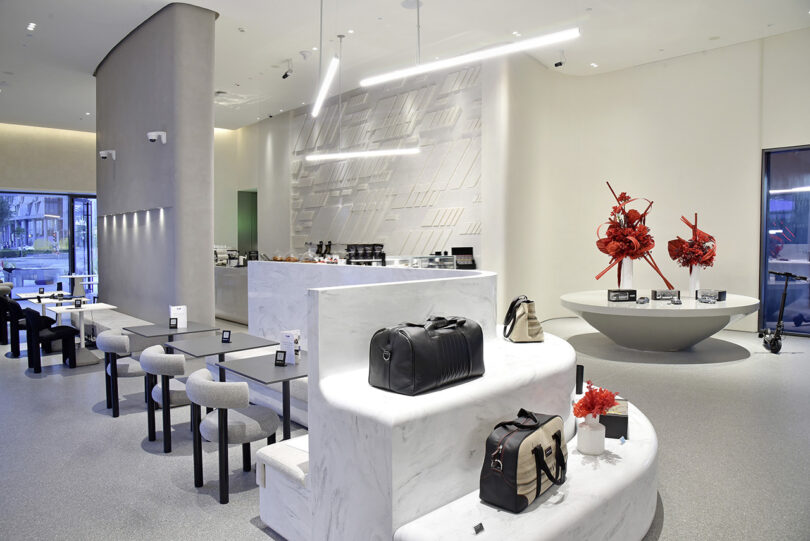
The AMG Kaffeehaus cafe and merchandise display greets visitors at the door of the Mercedes-Benz Brand Center Dubai.
Inside, guests are greeted by layers of hospitality ranging from a coffee and refreshments bar, to various retail displays of goods and gifts including – but not exclusive – to the Mercedes-Benz brand. Vintage cars are parked prominently next to the latest models, including high-performance Mercedes-AMG cars, with the even more exclusive Maybach line afforded its own secluded section.
Even in opulent Dubai, sustainability has become a marketable feature, if not a necessity. 25% of the Brand Center’s electricity is provided by an array of rooftop solar panels. Additionally, Jennie Binchy notes the firm made efforts to hide away HVAC units from view, respectful of the numerous neighboring inhabitants living and working in high rises nearby.
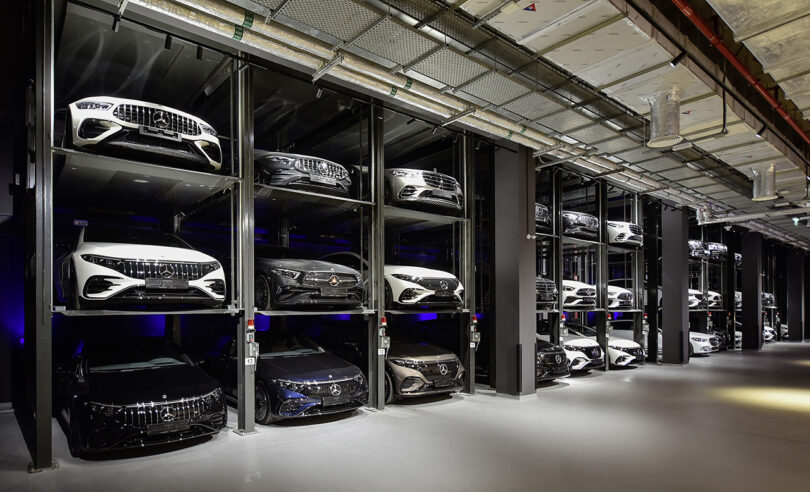
A “Car Wall” collection partially visible from the adjoining showroom displays 76 Mercedes-Benz models, representing many of the brand’s most noteworthy and coveted designs stacked three cars high.
Additionally drought-tolerant and indigenous landscaping was planted to acclimate to the local climate with only a minimal amount of irrigation requirements. The Brand Center’s parking lot also hosts 15 on-premises charging stations, of which four have rapid charging capabilities able to fully charge vehicles in around 30 minutes.
The Center’s architecture also reflects the brand and dealer’s aspirations to host curated seasonal programming extending beyond the automotive realm, with focuses on lifestyle, design, arts, culture, technology, and even watchmaking, with rooms easily configurable to host a variety of events.
At the crossroads of the EV revolution, generational changes in purchasing habits, and the democratization of luxury, the automotive industry recognizes a brand in itself is no longer enough. The Mercedes-Benz Brand Center in Dubai emerges as one of the more engaging experiential and sensorial architectural retail developments of the region, showcasing the feeling of luxury as much as literally selling it.
[ad_2]
Source link

